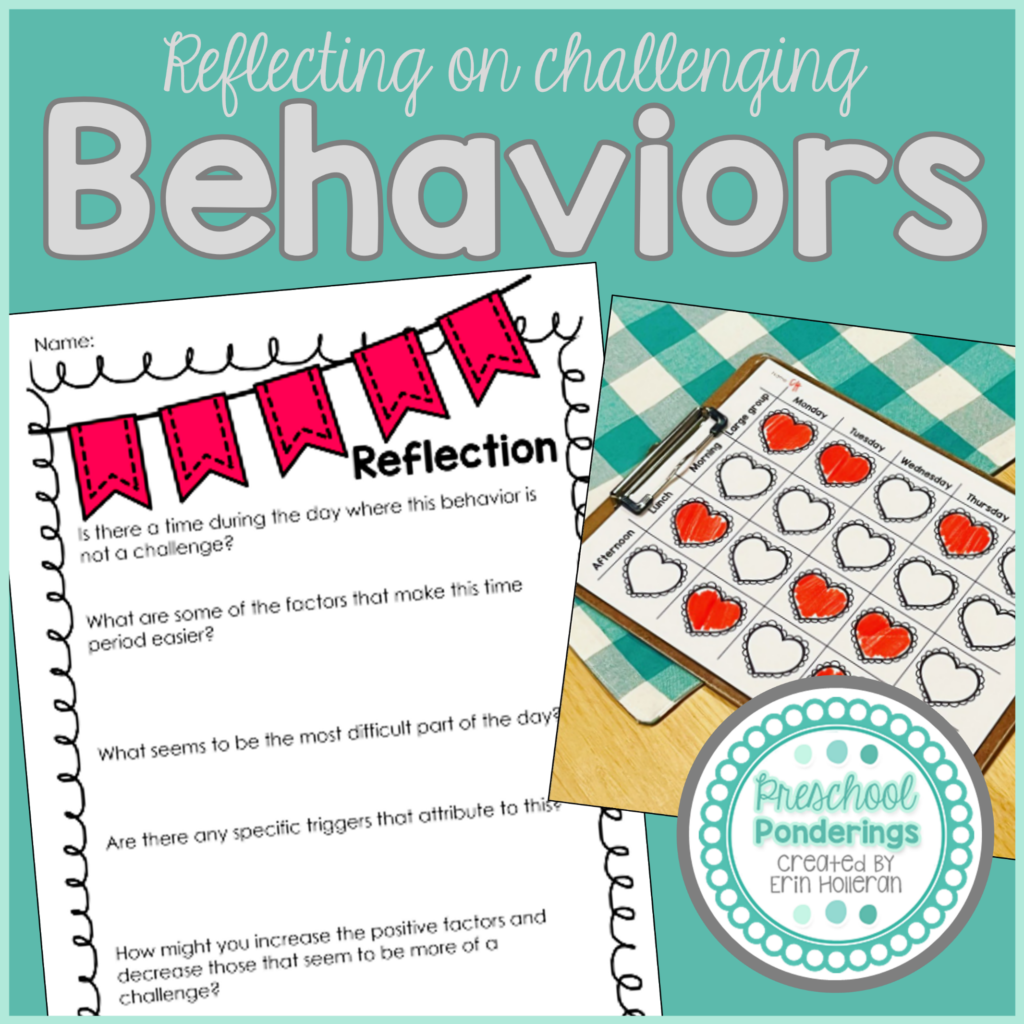
REALLY Changing Challenging Behaviors

A couple of weeks ago I shared a free sample of a behavior tracking system that can be used to identify patterns related to challenging behaviors. Now, I want to dig into what happens after you’ve identified those patterns. Let’s reflect so that you can really starting changing challenging behaviors in the classroom.
Part of this system is a reflection sheet:
This reflection starts by exploring what is working WELL for this child already – what parts of the day are they successfully able to manage their behavior? For some children, this will be easily evident, and for others you might have to continue observing to get an even better understanding. When you have an idea of what this time of the day looks like, you can dig even deeper to pinpoint the pieces that are especially helpful. It might be that the child responds to the highly structured portions of your day, that they do best when they have plenty of room away from the stimulation of other children, or they they can be most successful when they’re able to move their bodies freely (for example).
Now take a look at the parts of the day that are a challenge. Is there any way to incorporate some of the strategies that work well for this child into these pieces of the day? Let’s say you have a child who really struggles during large group times, and you’ve identified that this is because having so many people that close to them is overstimulating. This same child does well during center time because they can choose spaces that aren’t crowded or loud. How might you use all of this information? Is there a way to give everyone a little more space during large group – or to put this child in very specific seat that offers the least distraction from others?
This is the brainstorming piece – write down ALL of your thoughts and potential strategies. Having a nice long list gives you something that you can come back to often as you dial in the intervention that really makes a difference. When you’re ready to begin implementing these strategies, take them on like a scientist would. Choose one very specific idea and take the time to let the child get used to it and really observe if it’s helping. Sometimes you’ll see a difference in a couple of days, sometimes it takes a couple of weeks, and sometimes it doesn’t make a difference at all. I’ve learned that the key is to keep these strategies simple – if they work, you’ll have to continue them indefinitely, so you want them to be easy to maintain.
Continue tweaking and trying strategies until you’ve found a combination that works. It can be a long, discouraging process, and once you find a great strategy, something might change in the child’s life that throws it off – then you start back at square one. The most important thing in all of this is that you’re truly coming at it as a way to support a child and even if you don’t find a perfect fit, that child will know that you’ve committed to their needs and are on their side. You’ve got this!




